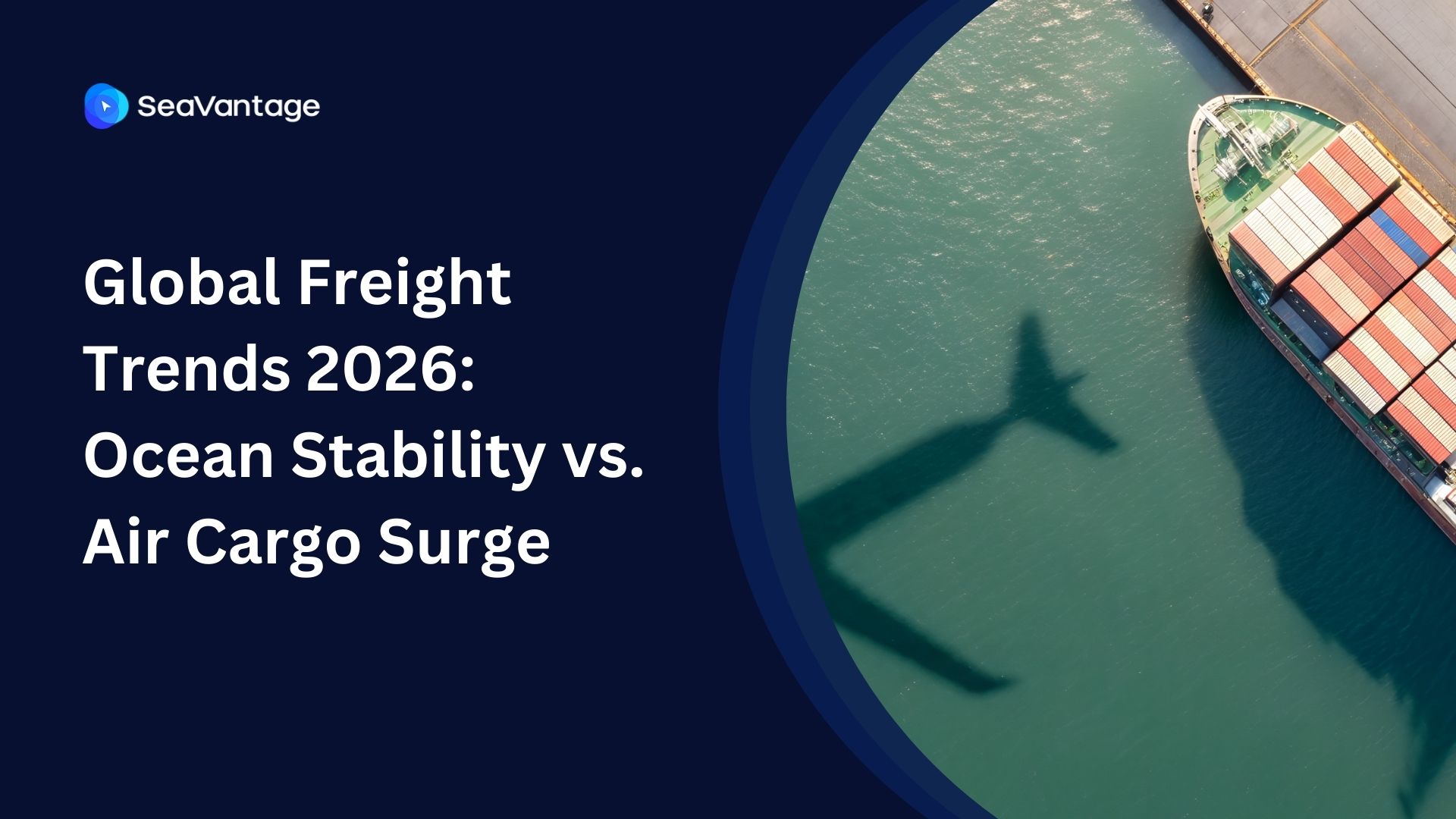Improving Global Supply Chain Visibility Through IoT-Enabled End-to-End Container Tracking
.jpg)
Supply chain disruptions cost businesses billions each year. Delays, lost shipments, and inefficiencies erode profits and damage customer relationships.
But what if you could track every container and its condition (temperature, humidity, door tampering) in real time?
IoT-enabled container tracking makes that possible. By equipping shipping containers with smart sensors, companies gain complete visibility into their cargo—location, condition, and security—throughout the journey.
This tracking solution is transforming global trade. If you're involved in logistics, manufacturing, or retail, understanding how to implement IoT tracking can significantly improve your operations.
What Is IoT-Enabled Container Tracking?
IoT (Internet of Things) refers to connected devices that collect and transmit data. In container tracking, IoT sensors are attached to shipping containers, providing continuous updates on:
- Location – GPS-enabled tracking ensures real-time monitoring.
- Temperature – Critical for perishable goods, sensors detect fluctuations.
- Humidity – Helps prevent damage to sensitive cargo.
- Shock & Tilt Detection – Alerts companies to mishandling or potential theft.
- Door Status – Notifies users if a container has been opened unexpectedly.
Instead of waiting for port updates or relying on outdated tracking methods, businesses get instant, data-driven insights into their shipments.
Why Supply Chain Visibility Matters
Every delay or lost shipment impacts your bottom line. IoT tracking addresses key supply chain challenges:
1. Real-Time Location Tracking
You always know where your cargo is. If delays occur, you can proactively adjust schedules or inform customers.
Example: A U.S.-based electronics distributor uses IoT tracking to monitor shipments from Asia. When a container is delayed at customs, they receive an alert and notify customers about revised delivery times.
2. Predictive Analytics for Disruptions
IoT tracking provides historical and real-time data to anticipate issues before they happen.
Example: A European auto manufacturer uses IoT data to predict congestion at key ports. By analyzing past shipment trends, they optimize routing and avoid costly delays.
3. Improved Security & Theft Prevention
Containers fitted with IoT sensors detect unauthorized door access, unusual movements, or sudden changes in environmental conditions.
Example: A pharmaceutical company shipping temperature-sensitive drugs receives an alert when a container's temperature spikes unexpectedly. A quick intervention prevents product loss.
Case Study: Hapag-Lloyd’s IoT Tracking Implementation
One of the world's largest shipping companies, Hapag-Lloyd, is rolling out IoT-based container tracking across its fleet.
- As of 2024, over two-thirds of their dry container fleet is equipped with IoT tracking devices.
- The goal is full coverage by summer 2024
- Their system provides real-time location tracking and condition monitoring, eliminating blind spots in global shipping.
For businesses, this means better planning, fewer surprises, and a more reliable supply chain.
Challenges of Implementing IoT Container Tracking
Despite its benefits, companies must navigate a few hurdles:
1. High Implementation Costs
IoT tracking devices, data storage, and integration with existing systems require investment. However, the long-term savings in reduced losses and improved efficiency outweigh the costs.
2. Cybersecurity Risks
IoT systems collect vast amounts of data, making them attractive targets for cyberattacks. Strong encryption and strict access controls are necessary.
3. Integration with Legacy Systems
Many companies still rely on older tracking solutions. Seamlessly integrating IoT tracking with existing software and logistics platforms can be complex.
The Future of IoT in Container Tracking
The logistics industry is moving toward fully digitized, autonomous supply chains. Here’s what’s coming next:
- 5G Connectivity – Faster and more reliable IoT data transmission.
- AI-Powered Insights – Predictive analytics will become even more accurate.
- Blockchain for Secure Transactions – Ensuring transparency and reducing fraud.
Companies that adopt IoT tracking today will gain a competitive edge in an increasingly digital supply chain landscape.
What’s Your Next Step?
Are you still relying on manual tracking updates? How would real-time supply chain visibility improve your business operations?
If reducing delays, cutting costs, and preventing losses are priorities, IoT-enabled container tracking should be on your radar.
The future of logistics is smart, connected, and data-driven. Are you ready to adapt?
2025년 9월, 주요 글로벌 항만에서 어떤 운송사가 가장 긴 선박 체류 시간을 기록했는지 확인해보세요. 트렌드를 비교하고, 지연을 파악하며, 전체 항만 데이터를 통해 운송 전략을 최적화할 수 있습니다.
2025년 8월, 주요 글로벌 항만에서 어떤 운송사가 가장 긴 선박 체류 시간을 기록했는지 확인해보세요. 트렌드를 비교하고, 지연을 파악하며, 전체 항만 데이터를 통해 운송 전략을 최적화할 수 있습니다.
2025년 7월, 주요 글로벌 항만에서 어떤 운송사가 가장 긴 선박 체류 시간을 기록했는지 확인해보세요. 트렌드를 비교하고, 지연을 파악하며, 전체 항만 데이터를 통해 운송 전략을 최적화할 수 있습니다.
iscover the 4 critical ocean freight trends for 2026, from the Red Sea reopening and fleet overcapacity to shifting global trade maps. Prepare your supply chain now.
Discover key 2026 freight market trends: Port of Houston expansion, air cargo "super peak," and ocean freight stability. Plan your supply chain with SeaVantage.
Explore November 2025 global port dwell time data. See which ports and carriers led in efficiency across Antwerp, Busan, Long Beach, Rotterdam, and Singapore.



.svg)





.jpg)

.png)